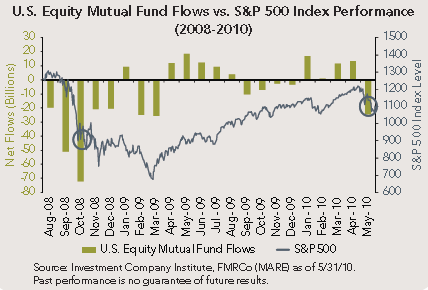As Bespoke notes, the five criteria that need to be met are as follows:
- The daily number of New York Stock Exchange new 52-week highs and daily number of new 52-week lows must both be greater than 2.2% of total NYSE issues traded that day.
- The smaller of these numbers is greater than or equal to 69 (2.2% of 3126 NYSE issues). This is not a rule, but more like a check.
- The NYSE 10-week moving average must be rising.
- The McClellan Oscillator must be negative on the same day.
- New 52-week highs can't be more than twice new 52-week lows (however, it's fine for lows to be more than double highs).
"Looking at the list of news highs and lows from Thursday, August 12 (the first Hindenburg Omen trigger day), there were 92 stocks (2.9% of NYSE) that hit new highs and 82 (2.5%) that hit new lows.
However, a closer look at the list of new highs shows that most of the "stocks" hitting new highs were hardly stocks at all. Practically all were closed-end fixed income securities, preferred stocks or some other form of fixed income product masquerading as stocks. In fact, of the 92 issues that hit new highs, only seven were common stocks!
Given that there are so many fixed income products that now trade on the NYSE, and with demand for them so high, perhaps a better way to measure new highs (or lows) is by filtering out all the quasi-stocks. B.I.G. did this by looking only at stocks in the S&P 500® index and applying the same Hindenburg Omen parameters.
On the initial trigger day, only 0.2% of S&P 500 stocks hit new highs while 5.6% hit new lows. Of course, a day with 5.6% new lows doesn't highlight a healthy market, but it may not reflect the confusion that the Hindenburg Omen supposedly conveys. As B.I.G. noted, 'Call us crazy, but an indicator that measures the internals of the equity market should probably avoid using fixed income securities in its analysis.'"
For investors then, as uncertainty about the future direction of the market abounds, be sure not to take the bearish or bullish market signals at face value. This is not the same market your parents or grandparents invested in historically.
Source:
Land of Confusion … Bubbles and Omens Dissected
Charles Schwab & Co.
By: Liz Ann Sounders
August 30, 2010
http://www.advisorperspectives.com/commentaries/schwab_090110.php
Know Your Indicators: Hindenburg Omen
Bespoke Investment Group
August 18, 2010
http://www.bespokeinvest.com/thinkbig/2010/8/18/know-your-indicators-hindenburg-omen.html


















